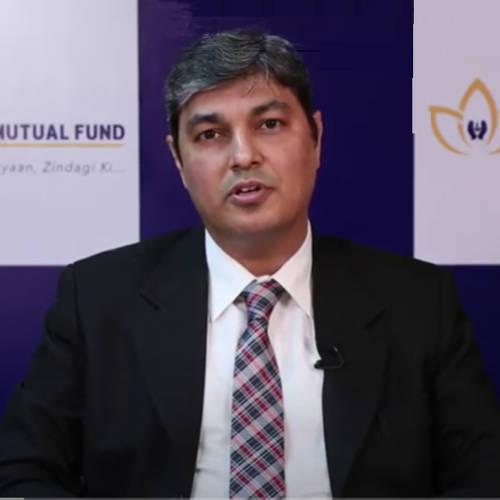-

Markets tend to discount the future. Irrespective of whether there are two more interest rate hikes or three or even four, markets have already factored in interest rate hikes by the RBI
Marzban Irani, CIO, Debt, LIC MF
The hardening interest rates in the US are more troubling for the markets. Nimesh Shah, MD & CEO, ICICI Mutual Fund, (AUM Rs4.68 lakh crore) says: “While India remains one of the most structured markets in the world, Indian equity markets are likely to be volatile till the time the Fed is done with tightening. It remains to be seen when the central banks will end tightening and start easing.”
Many FIIs, in anticipation of higher interest yields and global uncertainties, have been booking profits from emerging markets, including India. In the first 10 days of June, they collectively sold shares to the tune of Rs18,000 crore which is on top of the nearly Rs3 lakh crore sold since December 2021.
“When interest rates go up, equities will do badly,” says A Balasubramanian, MD & CEO, Aditya Birla Sunlife Mutual Fund. “Corporate earnings will be impacted in the first quarter, and there are also fears that crude oil prices may go up if the war in Europe does not end soon. High oil, inflation, muted corporate earnings growth – all will dampen sentiments. This is one of the reasons why globally, Exchange Traded Funds (ETFs) are selling in a big way.” He adds that on the flip side, markets have not factored in the impact of a good monsoon and will likely pick up in the festive season.
However, there is a positive side to this: “Markets tend to discount the future. Irrespective of whether there are two more interest rate hikes or three or even four, markets have already factored in interest rate hikes by the RBI,” says Marzban Irani, CIO, Debt, LIC MF. Irani does not expect the 10-year yield to go above 8.5 per cent or the repo rate to be more than 5.5 per cent. He does not expect any large corporate borrowings from the markets at this juncture.
There is near unanimity that the markets will experience more pain. It is this expectation that has led to a risk-off strategy by FII, which is paring risks by booking profits.
Should long term investors really worry about the daily fluctuations witnessed in the market? On Friday, 10 June, the BSE Sensex shed nearly 1,016 points to close at 54,303. Since January the Sensex has been going down by 8 per cent. The downslide is more evident in midcaps and small caps (see graph). Midcaps and small caps, which had seen good gains in the aftermath of Covid, have seen double-digit losses of 11 per cent and 13 per cent respectively.
Despite the rupee going down to record lows and piercing the 77.50 levels to a dollar, the Dollar 100 index has slipped by 12 per cent. There is clear flight to safety with many investors preferring big caps over small caps and midcaps. Midcaps and small caps, in general, may continue to underperform large caps in the short term.
Steady investments in MF
Investors are clearly unfazed by the steady decline and continue to invest. In May 2022, the latest month for which data is available, net inflows in equity schemes were Rs18,529 crore. Retail investors have been steadily ploughing funds into MF. Since early January this year the net inflows in equity schemes (excluding hybrids) totalled nearly Rs100,000 crore as per AMFI.
From December to March, MFs have seen inflows of nearly Rs1.25 lakh crore. While this may be less that the Rs3 lakh crore net sales effected by FIIs during the same period, what is noteworthy is that MFs are coming of age and along with DIIs, are emerging as a strong counter balancing force to the FIIs.
-

The confidence of investors in equities is unshaken. This is evident from the continued flow of investments in mutual funds. Investors are savvy and have matured
Ajay Garg, Founder, Equirus Capital
Retail investors seems to have more confidence in the long-term growth of equities. “This is a good time to invest. The current decline provides investors with a good opportunity to buy shares of good companies at reasonable valuations,” says Satish Menon, executive director, Geojit Financial Services Limited. “Investors with a three- to five-year horizon can look at investing in banks, tech and financials. Menon feels that this time around the pain in the markets is due more to external factors than internal ones.
Retail investors are prone to buying small cap and midcaps in the hope of striking pay dirt in no time. However, the newer lot of investors are striking a balance between investing directly in the markets and investing through mutual funds.
“Given the uncertain times, the road ahead calls for prudent investment strategies,” says Nimesh Shah, adding that: “It begins with adhering to asset allocation. For an investor, it is imperative to invest across various asset classes through dynamic asset allocation or multi-asset schemes, stick to large caps and invest in mid and small caps via SIPs only.”
There is certainly a lot of money still sloshing around. The Indian Corporate sector has used the last few years to pare its balance sheets and has reasonable cash on hand. With capex plans still being finetuned, supply of money will outpace demand in the short run, capping any runway rise in yields.
Many companies have embarked on buyback schemes in a bid to reward capital. Since 1 January, there have been 33 offers to buy on account of takeovers, and more than seven buyback offers. Amongst the large buyback offers have been TCS, GAIL and GE Shipping. The other big ones will be from Adani, following the takeover of Ambuja Cement and ACC.
The debacle of the LIC at listing may also be temporary. Ajay Garg, founder, Equirus Capital, a full-service midmarket financial service provider, feels that the steep drop in the share prices of LIC post its listing is unlikely to impact sentiments in the IPO market. “The confidence of investors in equities is unshaken. This is evident from the continued flow of investments in mutual funds. Investors are savvy and have matured,” he says. There were setbacks earlier too, such as Paytm or Zomato.”
One97 which houses the app Paytm is currently at Rs600, which is a third of its 52-week high. PB Fintech which houses another fintech app, Policy Bazar, is currently available at Rs592 as against its 52-week high of Rs1,470. Zomato is currently ruling at Rs59 against Rs169. Nykaa and CarTrade are amongst the others ruling far below their issue prices. Investors have taken this in their stride.
Does this mark the end of the fintech boom? Far from it. Investors still feel that some of these may well emerge as winners in times to come. As of now, investors are looking at tried and tested industries like cement, steel, EPC and IT.
-

This is a good time to invest. The current decline provides investors with a good opportunity to buy shares of good companies at reasonable valuations
Satish Menon, Executive Director, Geojit Financial Services Limited
Commodities
The last two years have been dream years for commodities. Be they steel, aluminium or cement. While shares at the current levels are down to 52-week lows, if one takes a three-year view, the shares are still 100 per cent over the prices ruling earlier. In the case of Hindalco, the shares were priced at Rs149 in June 2020.
After touching a multi-year high of Rs636 in March this year, they are ruling at Rs385. The same goes for Tata Steel. In June 2020 they were ruling at Rs317. After going up 5x to Rs1,534 in August 2021 they are now ruling at Rs1,024. Still three times above the price two years ago. JSW was at Rs190 in June 2020. Today, despite the fall from its peak of Rs790 in April 2022, it is priced at Rs572.
The point is that comparing them to the immediate past may not necessary be a good way of evaluating shares. For long term investors it makes sense to not look at day to day fluctuations. Steel, aluminium, cement and power are the basic industries which will grow once demand from infrastructure grows. Tata Steel, with its plants in Europe and UK, is better placed to supply steel for the reconstruction work post the war in the Ukraine.
Each industry has its own dynamic. In the case of cement, the entry of Adani replacing Holcim in Ambuja Cement and its subsidiary ACC, may change the powerplay. UltraTech recently announced capex plans to increase its capacity by 22.3 million tonnes. Its existing capacity is 120 mtpa. On completion the capacity of Ultratech may well be twice that of its closest competitor, Adani.
While the new roads and ports will require higher suppliers, the fear is that all the other companies like JSW, Adani, Shree Cement or Dalmia, may also embark on ramping up their cement capacities. In such a scenario, profit margins could be impacted. Many cement companies’ shares are thus ruling at nearly 50 per cent below their peak.
If one is bullish on India’s growth story, banks should be part of one’s portfolio. PSU bank shares have been badly beaten down and one could look at them. For the longer term, private banks will continue to grow.
While negative factors are eclipsing investor decisions, direct buying may require some courage. However, having a contrarian approach may pay well in the long run with a three to five-year horizon. The monsoon may well provide the necessary trigger to bring about a change in sentiments.





































